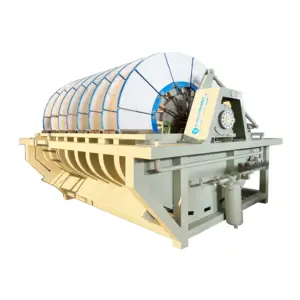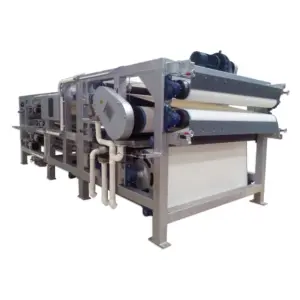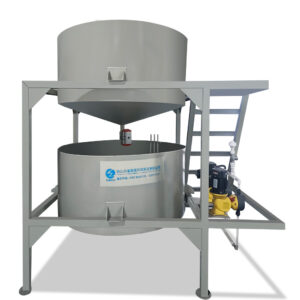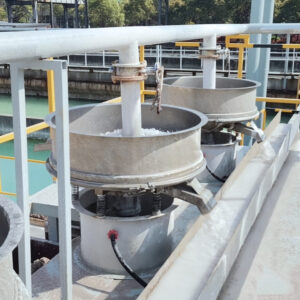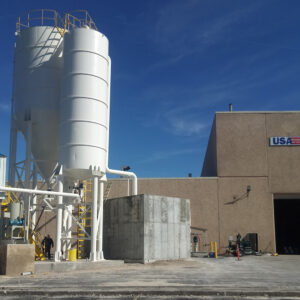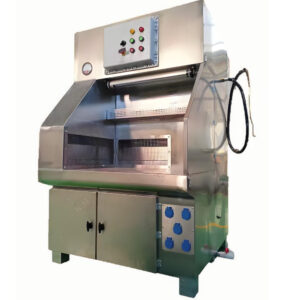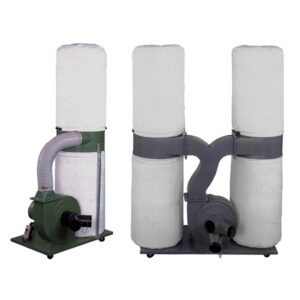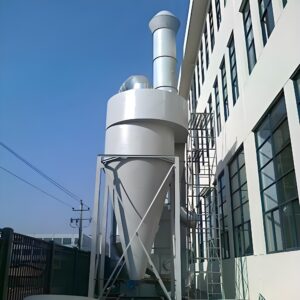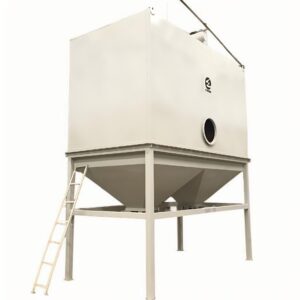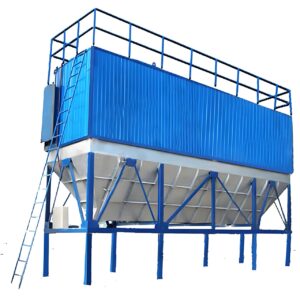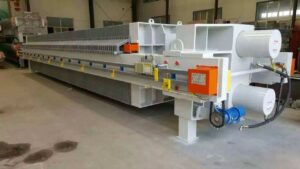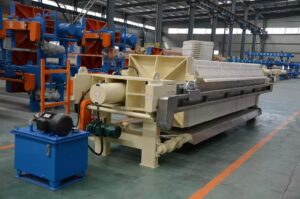Problem: Water treatment facilities struggle with inconsistent chemical dosing, leading to poor treatment efficiency, increased operational costs, and regulatory compliance issues. Manual dosing systems create variability in polymer and coagulant application, resulting in suboptimal flocculation and coagulation processes.
Agitate: Without precise chemical dosing control, treatment plants face cascading problems: excessive chemical waste drives up operational costs by 20-30%, while under-dosing leads to effluent quality failures and potential regulatory penalties. These inefficiencies compound over time, creating significant operational headaches.
Solution: Modern PAM PAC dosing systems offer automated, precision-controlled chemical delivery that optimizes treatment processes while reducing waste and ensuring consistent performance. This comprehensive guide explores the technical specifications, performance metrics, and intelligent features that make these systems essential for contemporary water treatment operations.
PORVOO Clean Tech has been at the forefront of developing advanced dosing solutions that address these critical challenges in wastewater treatment applications.
What is a PAM PAC Dosing System and How Does it Work?
A PAM PAC dosing system represents the integration of polyacrylamide (PAM) and polyaluminum chloride (PAC) chemical delivery into a unified, automated platform. These systems precisely control the injection of both polymer and coagulant chemicals into water treatment processes, ensuring optimal flocculation and coagulation performance.
Core Operating Principles
The fundamental operation relies on real-time monitoring and automated adjustment of chemical feed rates based on incoming water quality parameters. Advanced sensors continuously measure turbidity, pH, and flow rates, while control algorithms adjust dosing accordingly. This closed-loop system maintains consistent treatment performance regardless of influent variations.
Control systems typically operate on programmable logic controllers (PLCs) with human-machine interfaces (HMIs) that provide operators with real-time data visualization and system control capabilities. The integration allows for precise timing of PAM and PAC injection, critical for achieving optimal treatment results.
Chemical Delivery Mechanisms
Modern systems employ peristaltic pumps for polymer delivery and diaphragm pumps for coagulant injection. This dual-pump configuration ensures accurate dosing across varying flow conditions while maintaining chemical integrity. Pump selection depends on specific chemical properties and required flow rates.
| Component | PAM Application | PAC Application |
|---|---|---|
| Pump Type | Peristaltic | Diaphragm |
| Flow Range | 0.1-50 L/hr | 5-500 L/hr |
| Accuracy | ±2% | ±3% |
| Turndown Ratio | 100:1 | 50:1 |
What are the Key Technical Specifications of PAM PAC Systems?
Polymer dosing system specs encompass critical parameters that determine system capability and performance boundaries. Understanding these specifications helps operators select appropriate systems for specific treatment requirements.
Flow Rate and Capacity Specifications
Industrial-grade PAM PAC systems typically handle flow rates ranging from 10 m³/hr to 2,000 m³/hr, with dosing capabilities spanning 0.5 mg/L to 50 mg/L for polymers and 10 mg/L to 200 mg/L for coagulants. These ranges accommodate diverse treatment scenarios from small package plants to large municipal facilities.
Maximum system capacity depends on pump configuration and chemical tank sizing. Standard installations feature 500-2,000 liter chemical storage tanks with automated replenishment systems. Tank sizing considerations include daily consumption rates, delivery frequency, and safety stock requirements.
Precision and Control Parameters
Modern wastewater treatment systems achieve dosing accuracy within ±2% of setpoint under normal operating conditions. This precision level ensures consistent treatment performance while minimizing chemical waste. Control response time typically ranges from 5-15 seconds for flow adjustments.
Temperature compensation features maintain dosing accuracy across seasonal variations. Systems accommodate chemical temperatures from 5°C to 40°C without performance degradation, crucial for year-round operation in varying climates.
Electrical and Mechanical Requirements
Power requirements typically range from 5-15 kW for complete systems, including pumps, mixers, and control panels. Electrical specifications accommodate standard industrial power supplies at 380V/50Hz or 480V/60Hz configurations. Emergency backup power integration ensures continuous operation during power interruptions.
How Do Performance Metrics Define System Efficiency?
Coagulant dosing performance measurement requires comprehensive evaluation of multiple operational parameters that collectively define system effectiveness and reliability.
Treatment Efficiency Indicators
Primary performance metrics include removal efficiency percentages for suspended solids, turbidity, and chemical oxygen demand (COD). Well-optimized PAM PAC systems achieve 85-95% suspended solids removal and 70-90% COD reduction, depending on influent characteristics.
Flocculation effectiveness measurements focus on floc size distribution and settling velocity. Optimal systems produce flocs with median diameters of 200-800 microns and settling velocities exceeding 1.5 m/hr. These parameters directly correlate with downstream clarification performance.
Chemical Utilization Metrics
Efficient systems demonstrate chemical dosing system metrics that minimize waste while maintaining treatment standards. Typical polymer consumption ranges from 1-5 mg/L, while coagulant usage spans 15-80 mg/L, varying with water quality conditions.
“Modern PAM PAC systems can reduce chemical consumption by 15-25% compared to manual dosing methods while improving treatment consistency,” notes Dr. Sarah Chen, water treatment process engineer at Municipal Water Solutions.
Operational Reliability Measures
System uptime percentages serve as critical performance indicators, with industry-leading systems achieving 98-99% availability. Mean time between failures (MTBF) typically exceeds 2,000 hours for major components, while mean time to repair (MTTR) averages 2-4 hours.
| Performance Metric | Target Range | Measurement Method |
|---|---|---|
| SS Removal | 85-95% | Turbidity monitoring |
| Chemical Efficiency | 15-25% improvement | Consumption tracking |
| System Uptime | 98-99% | Operational logging |
What Makes Modern PAM PAC Systems Intelligent?
Intelligent dosing system features represent the evolution from simple automated dosing to sophisticated process optimization platforms that adapt to changing conditions and optimize performance continuously.
Adaptive Control Algorithms
Advanced systems incorporate machine learning algorithms that analyze historical performance data to predict optimal dosing strategies. These systems learn from operational patterns, seasonal variations, and equipment performance trends to continuously improve treatment efficiency.
Predictive analytics capabilities identify potential issues before they impact treatment performance. By analyzing pump performance data, chemical consumption patterns, and water quality trends, systems can schedule maintenance activities and adjust operating parameters proactively.
Real-Time Optimization
Modern control systems integrate multiple sensor inputs including online turbidity analyzers, pH meters, and flow sensors to create comprehensive process models. These models enable real-time optimization of chemical dosing ratios and injection timing for maximum treatment effectiveness.
Communication protocols allow integration with plant-wide supervisory control and data acquisition (SCADA) systems. This connectivity enables centralized monitoring and control while providing historical data for process optimization and regulatory reporting.
Remote Monitoring Capabilities
Cloud-based monitoring platforms provide 24/7 system oversight with smartphone and tablet accessibility. Operators receive immediate alerts for system anomalies, chemical levels, and maintenance requirements, enabling rapid response to operational issues.
In our experience working with municipal treatment facilities, remote monitoring capabilities have reduced emergency service calls by 40% while improving overall treatment consistency through faster response times to process upsets.
What are the Operational Advantages and Limitations?
Understanding both benefits and constraints helps operators set realistic expectations and optimize system implementation for specific applications.
Primary Operational Benefits
Automated PAM PAC systems deliver consistent treatment performance regardless of operator skill level or shift changes. This consistency eliminates the variability associated with manual dosing while reducing labor requirements by 2-3 hours per shift for chemical management tasks.
Chemical waste reduction represents a significant economic advantage, with properly optimized systems reducing overall chemical consumption by 15-30% compared to manual operations. This reduction results from precise dosing control and elimination of overdosing safety margins typically employed in manual systems.
Energy efficiency improvements occur through optimized pump operation and reduced downstream equipment loading. Enhanced flocculation and coagulation reduce clarifier loading, potentially decreasing sludge handling requirements by 10-20%.
System Limitations and Considerations
Initial capital investment requirements can be substantial, particularly for comprehensive systems with advanced control features. Typical installation costs range from $50,000-200,000 depending on system complexity and capacity requirements.
Maintenance complexity increases with system sophistication, requiring trained technicians familiar with PLC programming and sensor calibration procedures. Regular calibration protocols demand specialized equipment and technical expertise not required for manual systems.
According to a 2023 study by the Water Quality Research Institute, while automated dosing systems require 25% higher initial investment, they typically achieve payback within 18-24 months through operational savings.
Chemical compatibility limitations can restrict system flexibility when treatment requirements change. Some specialty chemicals may require different pump materials or modified delivery systems, potentially limiting operational adaptability.
How to Select the Right PAM PAC Dosing System?
System selection requires careful evaluation of treatment requirements, site conditions, and operational preferences to ensure optimal performance and cost-effectiveness.
Capacity and Flow Considerations
Begin selection by establishing maximum, minimum, and average flow rates for your specific application. Consider future expansion plans and seasonal variations when sizing system capacity. Oversized systems offer flexibility but increase initial costs and may operate less efficiently at minimum flows.
Chemical dosing requirements depend on influent water quality characteristics and treatment objectives. Analyze historical water quality data to establish typical dosing ranges and peak demand scenarios. This analysis guides pump sizing and chemical storage requirements.
Integration and Compatibility Factors
Evaluate existing plant infrastructure for compatibility with new dosing systems. Consider available electrical power, chemical storage space, and integration requirements with existing control systems. Advanced dosing solutions should complement existing plant operations rather than creating operational complications.
Control system compatibility ensures seamless integration with plant SCADA systems and reporting requirements. Standardized communication protocols facilitate future upgrades and maintenance activities.
Cost-Benefit Analysis Framework
Total cost of ownership includes initial equipment costs, installation expenses, ongoing maintenance requirements, and chemical consumption. Compare these costs against potential savings from reduced chemical waste, improved treatment efficiency, and decreased labor requirements.
Consider operational benefits including improved treatment consistency, reduced regulatory compliance risks, and enhanced plant reliability. These factors often justify higher initial investments through long-term operational improvements.
What Industry Applications Benefit Most from PAM PAC Systems?
Different industries present unique challenges and opportunities for PAM PAC dosing system implementation, with varying degrees of benefit depending on specific operational requirements.
Municipal Wastewater Treatment
Municipal applications represent the largest market for PAM PAC systems due to consistent flow patterns and established treatment processes. These facilities benefit from automated dosing through improved treatment consistency and reduced operator workload.
Regulatory compliance requirements in municipal applications favor automated systems that provide comprehensive data logging and treatment verification. Systems generate detailed reports supporting permit compliance and operational optimization efforts.
Industrial Process Water Treatment
Manufacturing facilities with variable waste streams benefit significantly from adaptive dosing capabilities. Industries such as food processing, textiles, and chemical manufacturing experience substantial operational improvements through automated chemical dosing.
A textile manufacturing facility in Southeast Asia reported 30% reduction in chemical costs and 95% improvement in effluent quality consistency after implementing an automated PAM PAC system. The system adapted to varying dye concentrations and production schedules automatically.
Mining and Mineral Processing
Mining operations face unique challenges with highly variable water quality and remote locations. Robust PAM PAC systems designed for harsh environments provide reliable treatment performance while minimizing maintenance requirements in remote locations.
| Application | Primary Benefit | Typical ROI Period |
|---|---|---|
| Municipal | Consistency & Compliance | 12-18 months |
| Industrial | Adaptability & Efficiency | 6-12 months |
| Mining | Reliability & Remote Operation | 18-24 months |
How Do Cost-Performance Metrics Stack Up?
Economic evaluation of PAM PAC systems requires comprehensive analysis of both direct costs and operational benefits to determine true system value.
Direct Cost Analysis
Initial system costs vary significantly based on capacity, sophistication, and site requirements. Basic systems start around $30,000 for small installations, while comprehensive systems for large facilities can exceed $150,000. Installation costs typically add 20-30% to equipment costs.
Annual operating costs include chemical consumption, electrical power, maintenance, and calibration services. Well-designed systems demonstrate 15-25% reduction in chemical costs through optimized dosing, while electrical costs remain minimal at 2-3% of total operating expenses.
Return on Investment Calculations
Most installations achieve positive ROI within 12-24 months through combined savings from reduced chemical consumption, improved treatment efficiency, and decreased labor requirements. Facilities with highly variable influent conditions often see faster payback periods due to greater optimization potential.
“The key to successful PAM PAC system implementation lies in matching system capabilities to specific site requirements rather than pursuing maximum automation for its own sake,” emphasizes John Martinez, senior process engineer at Industrial Water Technologies.
Long-term benefits include reduced regulatory compliance risks, improved plant reliability, and enhanced operational data for process optimization. These factors contribute to ongoing value beyond initial payback calculations.
Modern PAM PAC dosing systems represent a significant advancement in water treatment technology, offering precise control, intelligent operation, and substantial operational benefits. While initial investment requirements are considerable, the combination of reduced chemical consumption, improved treatment consistency, and enhanced operational reliability typically justifies implementation costs within 18-24 months.
The evolution toward intelligent systems with adaptive control and predictive maintenance capabilities positions these technologies as essential components of modern treatment facilities. As regulatory requirements become more stringent and operational efficiency demands increase, automated chemical dosing systems will become increasingly critical for successful plant operations.
For facilities evaluating dosing system upgrades, focus on matching system capabilities to specific operational requirements rather than pursuing maximum automation. Consider your unique water quality challenges, regulatory environment, and operational preferences when selecting among available treatment system solutions.
The future of water treatment lies in intelligent, adaptive systems that optimize performance while minimizing environmental impact and operational costs. PAM PAC dosing systems represent a crucial step toward this sustainable treatment paradigm.
Frequently Asked Questions
Q: What is a PAM PAC dosing system and why are its specs important?
A: A PAM PAC dosing system is specialized equipment designed to precisely dose chemicals like Polyacrylamide (PAM) and Polyaluminum Chloride (PAC) in water treatment processes. The specs of this system — including flow rate, dosing accuracy, material compatibility, and control precision — are important because they ensure optimal chemical use, protect equipment from corrosion, and consistently maintain water quality. Precise specs help minimize chemical waste and operational costs while maximizing treatment effectiveness.
Q: How does the PAM PAC dosing system performance impact water treatment?
A: The performance metrics of a PAM PAC dosing system directly influence treatment quality and efficiency. Key performance indicators include dosing accuracy (typically within ±0.5-2%), response time to changing water conditions, adaptability of control algorithms, and continuous monitoring capabilities. High-performing systems can reduce chemical usage by up to 30%, avoid over/under dosing, and maintain stable water parameters through real-time feedback and predictive adjustments.
Q: What are the main technical specifications to consider in PAM PAC dosing systems?
A: Important specs include:
- Dosing range and capacity: For example, flow rates from a few liters per hour to over 1000 LPH depending on application.
- Material compatibility: Wetted parts made from corrosion-resistant materials like PVDF or stainless steel.
- Control system: Integration of real-time sensors for turbidity, pH, and flow rate with intelligent algorithms.
- Automation features: Ability to perform automatic batching, dissolution, and dosing with minimal manual intervention.
- Accuracy: High precision dosing with minimal pulsation for consistent chemical delivery.
Q: How do intelligent control features enhance PAM PAC dosing system specs and performance?
A: Intelligent control systems use real-time monitoring, adaptive dosing, and predictive analytics to optimize chemical application. They react within seconds to fluctuations in water quality or flow, adjusting dosing rates dynamically. This reduces chemical consumption, prevents process upsets, and extends equipment life. Such systems maintain dosing accuracy better than traditional methods and provide closed-loop feedback for continuous improvement.
Q: What maintenance considerations affect the long-term performance of PAM PAC dosing systems?
A: To sustain optimal specs and performance, regular maintenance tasks include:
- Cleaning and inspecting pumps and dosing lines to prevent clogging.
- Verifying sensor calibration for accurate monitoring.
- Checking for wear on corrosion-prone parts and replacing them as needed.
- Ensuring software and control algorithms are updated for best adaptive responses.
Proper maintenance ensures dosing accuracy, system reliability, and consistent water treatment outcomes.
Q: Can PAM PAC dosing systems be customized to different water treatment needs?
A: Yes, PAM PAC dosing systems are highly customizable. Specifications such as dosing volume, chemical concentrations, control parameters, and system integration can be tailored to specific treatment challenges—whether for municipal wastewater, industrial effluents, or drinking water plants. Advanced systems allow flexible programming to accommodate varying water qualities and treatment goals, ensuring precise and efficient chemical dosing adapted to each unique application.
External Resources
- PORVOO PAM/PAC Intelligent Chemical Dosing System – Describes advanced process control features, real-time monitoring, adaptive dosing, and performance specs for intelligent PAM/PAC dosing in water treatment.
- Chemical Dosing Systems | PAM PAC Automation Guide – Offers a detailed explanation of PAM and PAC dosing system specs, dosing rates, automation, and performance metrics used in modern water treatment.
- PAC PAM Dry Powder Dosing Device for Water Purification – Provides an overview of PAC PAM dry powder dosing units used for precise chemical concentrations and automated dosing performance.
- PAM Integration Dosing Device – Details specs such as dosing capacity, materials, operation mode, and performance for PAM PAC automatic dosing systems.
- Pam Pac Pool Chlorine Paint Dosing System – QILEE Quality – Lists technical specifications including flow rate, productivity, and warranty information for a PAM PAC dosing system for pools and wastewater treatment.
- PAC/PAM Automatic Powder Dosing System – Summarizes main specifications and operational highlights of a PAC/PAM automatic powder dosing system suitable for water treatment applications.
